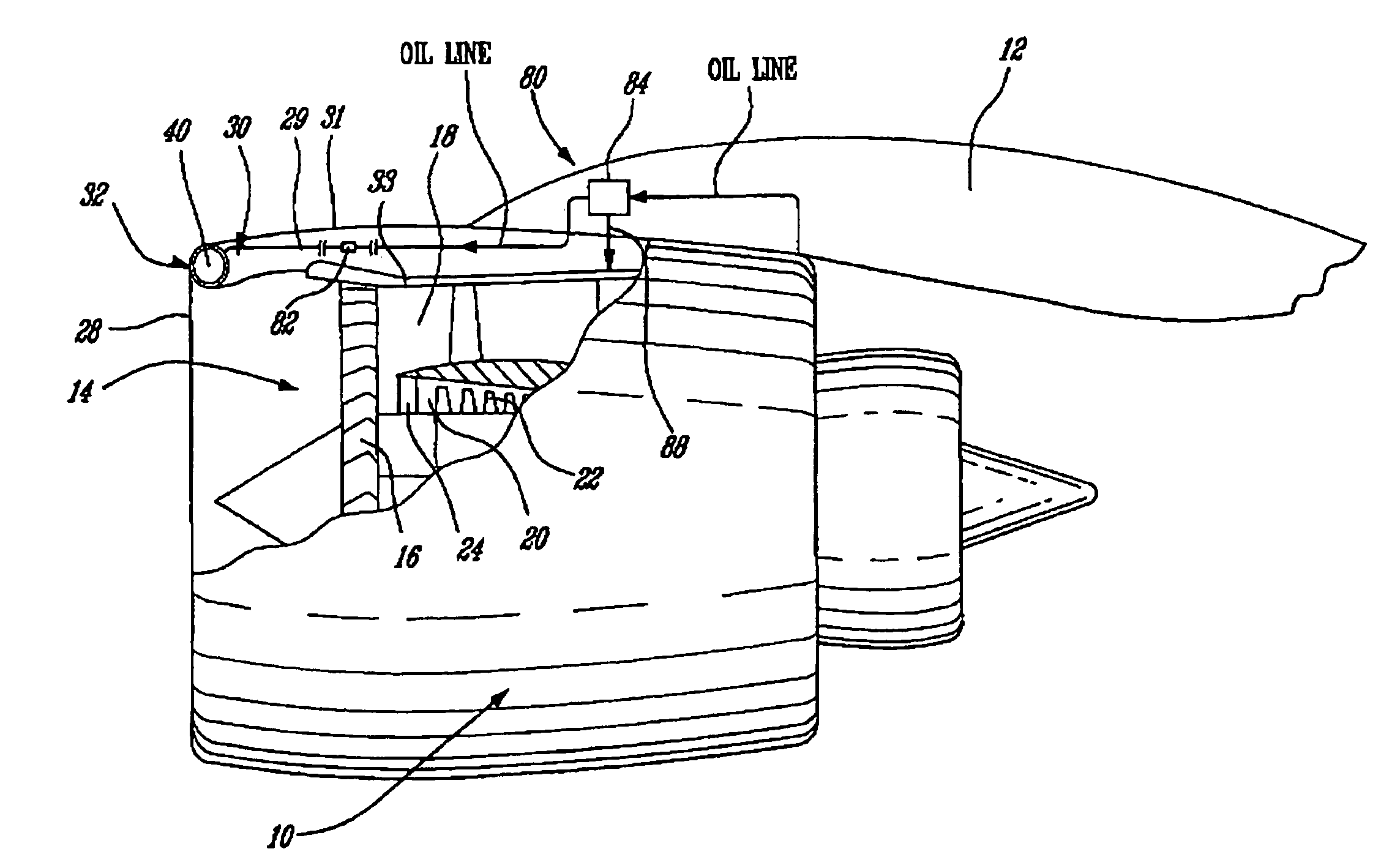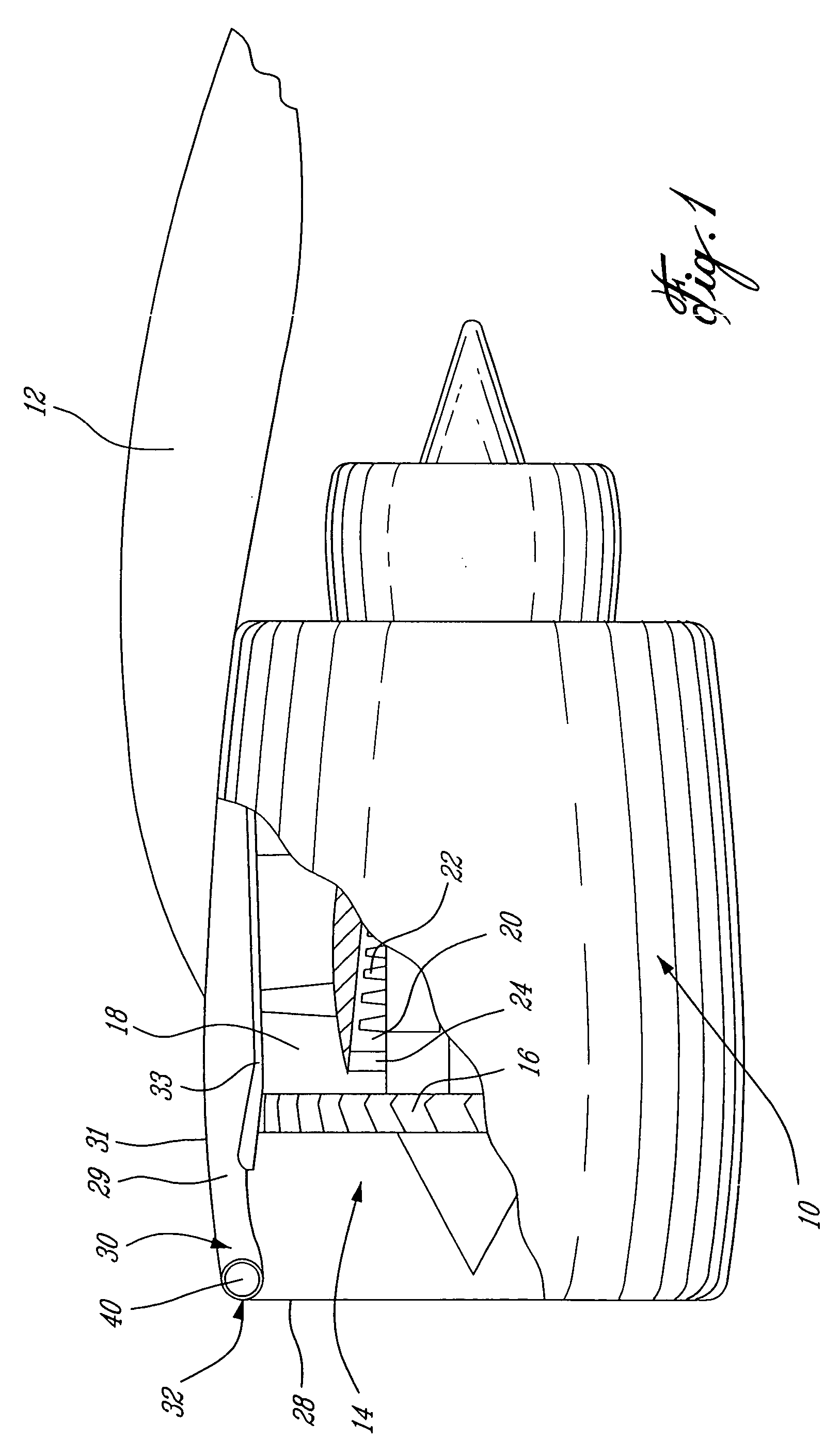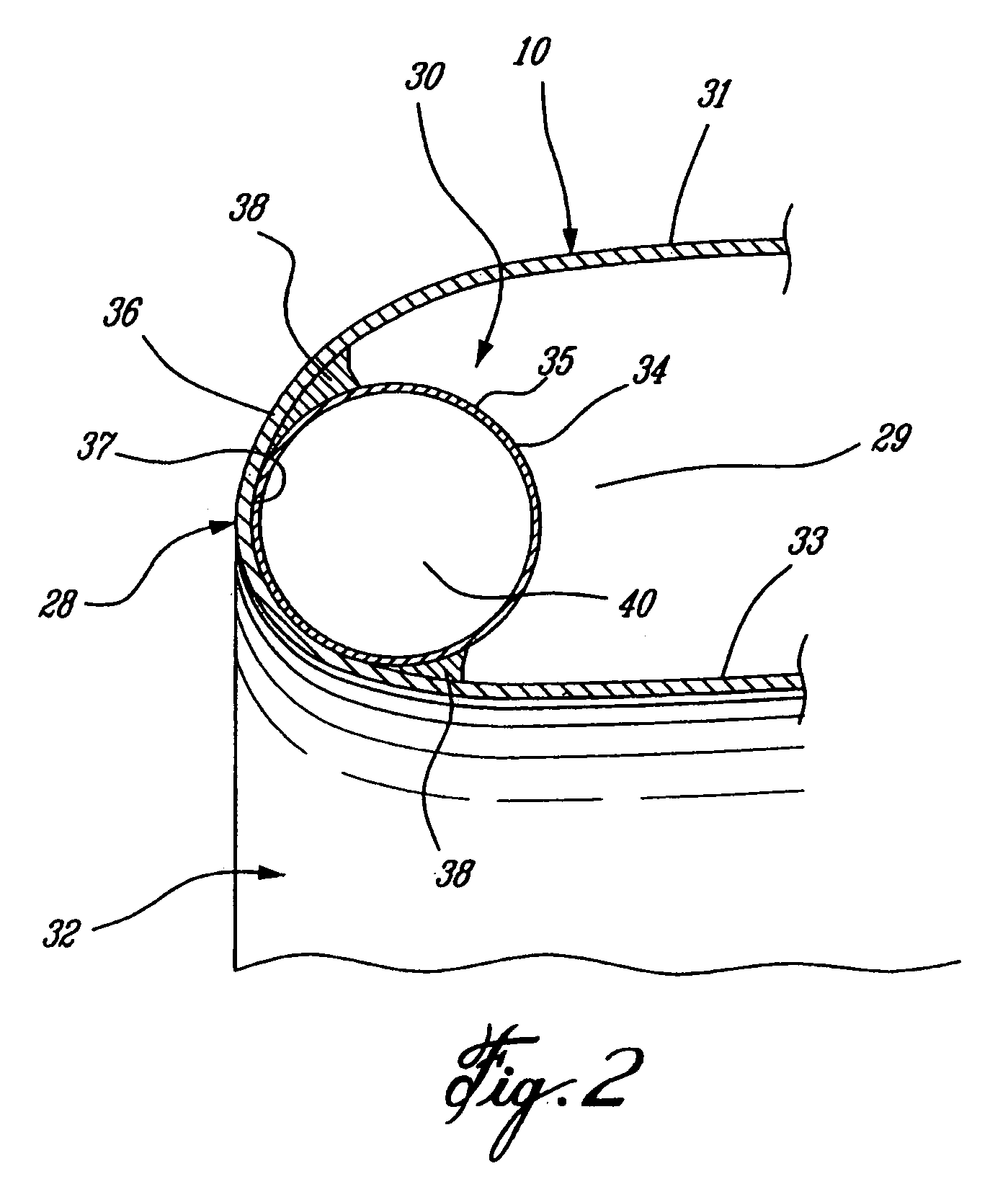Nacelle inlet lip anti-icing with engine oil
a technology of engine oil and inlet lip, which is applied in the direction of engine cooling apparatus, air transportation, jet propulsion plants, etc., can solve the problems of reducing the overall engine performance, power output, efficiency and/or cooling capacity of the power plant, and limiting the quantity of air being fed to the engine, so as to prevent ice buildup
- Summary
- Abstract
- Description
- Claims
- Application Information
AI Technical Summary
Benefits of technology
Problems solved by technology
Method used
Image
Examples
second embodiment
[0023]Referring now to the present invention depicted in FIG. 3a, the nacelle 110 is cast with the conduit 130, which defines the annular oil passage 140, integrally defined within the upstream end thereof. Annular retaining walls 144 within the hollow cavity 129 of the nacelle 110 define the oil passage 140 upstream thereof, between the retaining walls 144 and the curved leading edge of the inlet lip 128. At least an integral oil inlet conduit 146 and an oil outlet conduit (not shown) are similarly cast within the nacelle 110 near the inlet lip 128, such that oil can be pumped into the oil passage 140 and can be withdrawn therefrom once it has sufficiently cooled due to heat transfer to the outer surfaces of the nacelle inlet lip 128. Other structural elements such as support struts 148, which are provided to ensure adequate stiffness, are similarly integrally cast within the nacelle 110.
first embodiment
[0024]In contrast to the tube 34 which defines the oil passage 40 in FIG. 2, the advantage of casting the conduit 130 defining the oil passage 140 within the inlet lip 128 as depicted in FIG. 3a is that the shape and features of the oil passage 140 can be specifically selected and optimized to suit the particular anti-icing requirements for the intended application of the nacelle 110. Further, by casting the entire inlet lip 128 of the nacelle 110, the structure and the integrally defined passages therein can be manufactured to an exact required configuration with very little minimal post-production work, such as finish machining, polishing and welding for example, being necessary. This considerably saves on manufacturing time and expense required for the production of the finished part.
third embodiment
[0025]FIG. 3B is similar to that of FIG. 3A, however the conduit 130 further comprises an internal tube 152, which is integrally cast within the inlet lip 128 and defines the oil passage 140 therewithin. The internal tube 152 extends through the full circumference of the nacelle inlet and is comprised of a metal having a higher melting point than that of the base material of the nacelle 110, such that it can be integrally cast therein. The additional internal tube 152 integrally cast within the nacelle inlet lip 128 provides added protection against potential foreign object damage to the inlet lip 128 in comparison with the tube-less embodiment depicted in FIG. 3A. Therefore, should a foreign object strike the inlet lip 128 of the nacelle 110, the added integrally cast tube 152 further protects the oil passage 140 against a possible breach which would result in oil pressure loss. Another advantage of using an integrally cast tube 152 is that such pre-manufactured tubes are more cons...
PUM
 Login to View More
Login to View More Abstract
Description
Claims
Application Information
 Login to View More
Login to View More - R&D
- Intellectual Property
- Life Sciences
- Materials
- Tech Scout
- Unparalleled Data Quality
- Higher Quality Content
- 60% Fewer Hallucinations
Browse by: Latest US Patents, China's latest patents, Technical Efficacy Thesaurus, Application Domain, Technology Topic, Popular Technical Reports.
© 2025 PatSnap. All rights reserved.Legal|Privacy policy|Modern Slavery Act Transparency Statement|Sitemap|About US| Contact US: help@patsnap.com



